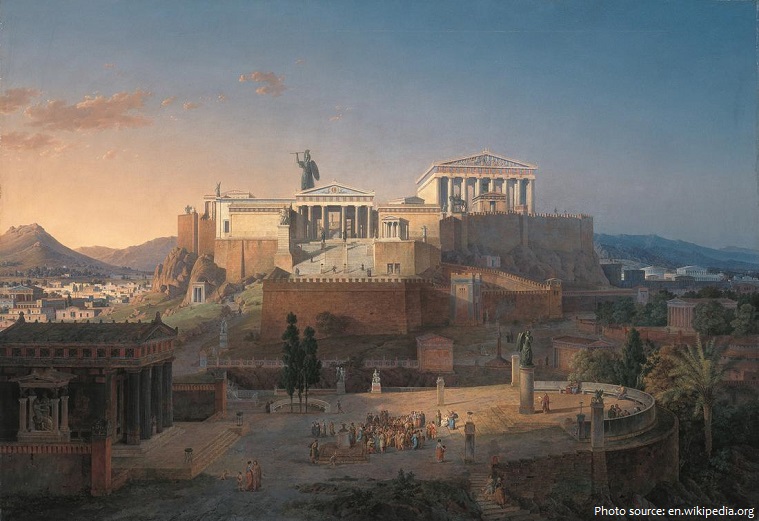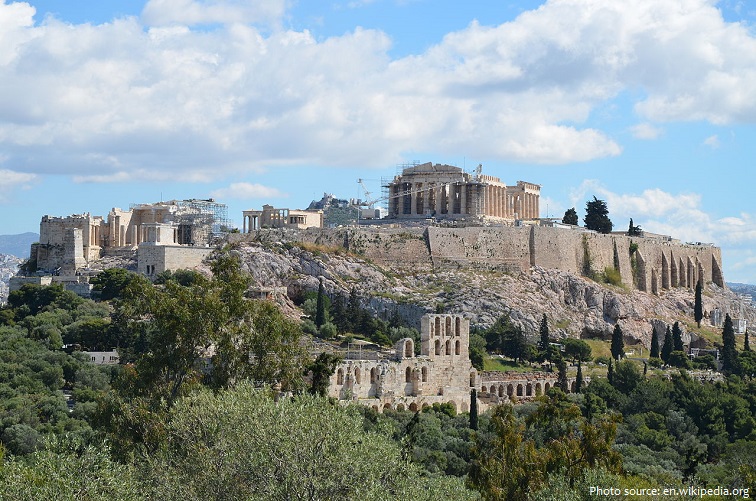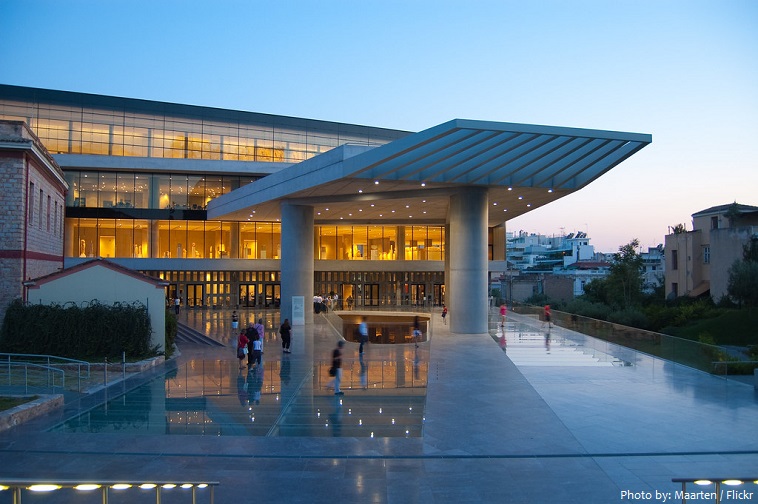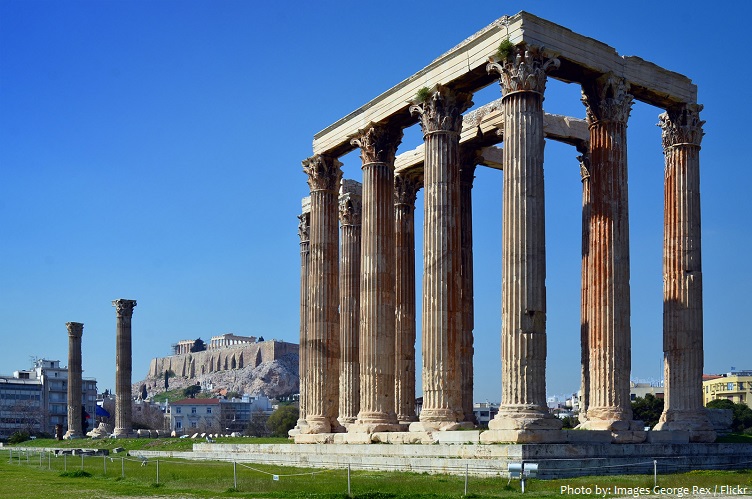Athens is the capital and largest city of Greece.
It is located in Central Greece in the southern part of the region of Attica.
As of May 2019, the population of Athens is about 3 million people.
The city covers a total area of 412 square kilometers (159 square miles).
Lykavittos Hill is the highest point in Athens, rising 277 meters (910 feet) above the city. Because of its height, it is a landmark visible from almost every part of the capital.
Athens is one of the world’s oldest cities, with its recorded history spanning over 3,400 years and its earliest human presence starting somewhere between the 11th and 7th millennium BC.
It became the leading city of Ancient Greece, even outdoing Sparta, in the first millennium BC.
Classical Athens was a powerful city-state that emerged in conjunction with the seagoing development of the port of Piraeus, which had been a distinct city prior to its 5th century BC incorporation with Athens.
A center for the arts, learning and philosophy, home of Plato’s Academy and Aristotle’s Lyceum, it is widely referred to as the cradle of Western civilization and the birthplace of democracy, largely because of its cultural and political impact on the European continent, and in particular the Romans.
During the Middle Ages, Athens experienced decline and then a recovery under the Byzantine Empire.
Athens was relatively prosperous during the Crusades, benefiting from Italian and Cuban trade.
After a long period of decline under the rule of the Ottoman Empire, Athens’ re-emerged in the 19th century as the capital of the independent Greek state.
In 1896, Athens hosted the first modern Olympic Games. It also hosted the most recent 2004 Olympic Games, for which many improvements to its infrastructure were made, including a new state-of-the-art airport and transportation links.
Today, Athens is a global city and one of the biggest economic centers in southeastern Europe.
Athens is home to two UNESCO World Heritage Sites, the Acropolis of Athens and the medieval Daphni Monastery.
The Acropolis of Athens is an ancient citadel located on a rocky outcrop above the city of Athens and contains the remains of several ancient buildings of great architectural and historic significance, the most famous being the Parthenon. It is located on a flattish-topped rock that rises 150 meters (490 feet) above sea level in the city.
The Parthenon is a former temple, located on the Acropolis of Athens. Directed by the Athenian statesman Pericles, the Parthenon was built by the architects Ictinus and Callicrates under the supervision of the sculptor Phidias. It was built between 447 and 438 BC although decoration of the building continued until 432 BC. The Parthen is dedicated to the goddess Athena, whom the people of Athens considered their patron. It is considered a key landmark of early Western civilization.
The Acropolis Museum is an archaeological museum focused on the findings of the archaeological site of the Acropolis of Athens. The museum was built to house every artifact found on the rock and on the surrounding slopes, from the Greek Bronze Age to Roman and Byzantine Greece. It also lies over the ruins of a part of Roman and early Byzantine Athens.
The Temple of Olympian Zeus also known as the Olympieion or Columns of the Olympian Zeus, is a former colossal temple at the center of the Greece capital Athens. It was dedicated to “Olympian” Zeus, a name originating from his position as head of the Olympian gods. Construction began in the 6th century BC during the rule of the Athenian tyrants, who envisaged building the greatest temple in the ancient world, but it was not completed until the reign of the Roman Emperor Hadrian in the 2nd century AD, some 638 years after the project had begun.
The National Archaeological Museum in Athens houses some of the most important artifacts from a variety of archaeological locations around Greece from prehistory to late antiquity. It is considered one of the greatest museums in the world and contains the richest collection of artifacts from Greek antiquity worldwide.
Daphni or Dafni is an eleventh-century Byzantine monastery eleven kilometers (6.8 miles) northwest of central Athens in the suburb of Chaidari, south of Athinon Avenue (GR-8A). It is situated near the forest of the same name, on the Sacred Way that led to Eleusis. The forest covers about 18 square kilometers (7 square miles), and surrounds a laurel grove. “Daphni” is the modern Greek name that means “laurel grove”, derived from Daphneion (Lauretum).
In Greek mythology, Athena is the goddess of wisdom.
The city is a world center of archaeological research.
Athens incorporates architectural styles ranging from Greco-Roman and Neoclassical to modern times.
Athens has a large financial sector, and its port Piraeus is both the largest passenger port in Europe, and the second largest in the world.
Athens, with its tall buildings and contemporary shops, is the first European city when approached from the Middle East. When approached from the west, from elsewhere in Europe, what strikes the visitor is the influence of the East—in the food, music, and clamorous street life—perhaps vestiges of a time when Athens was divorced from European society under the yoke of Ottoman rule.









